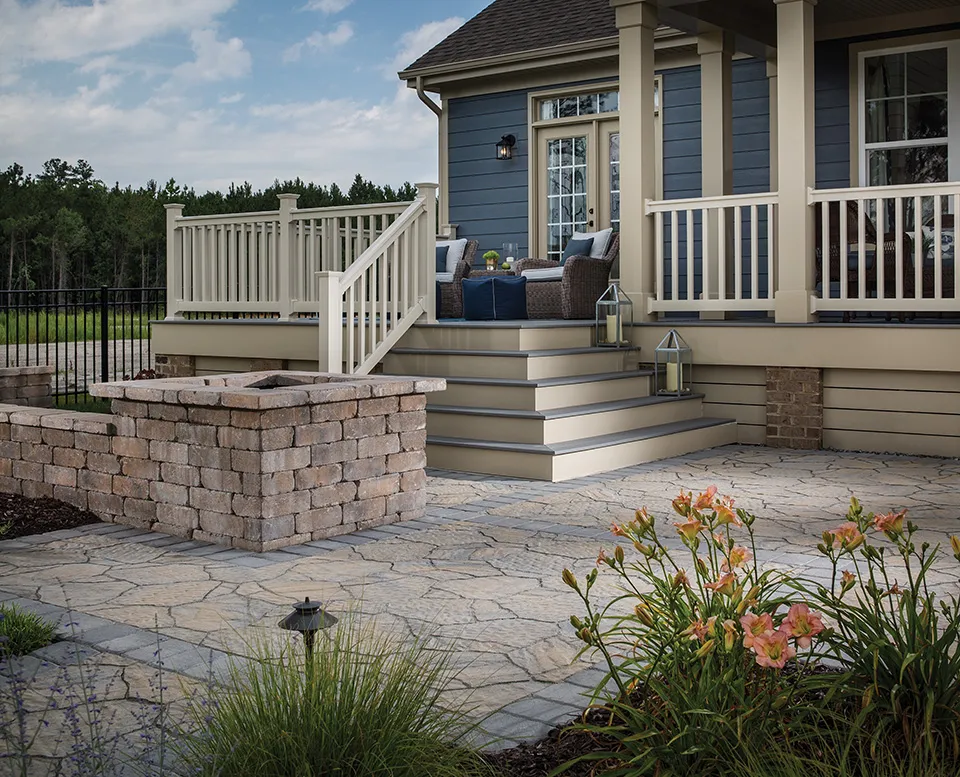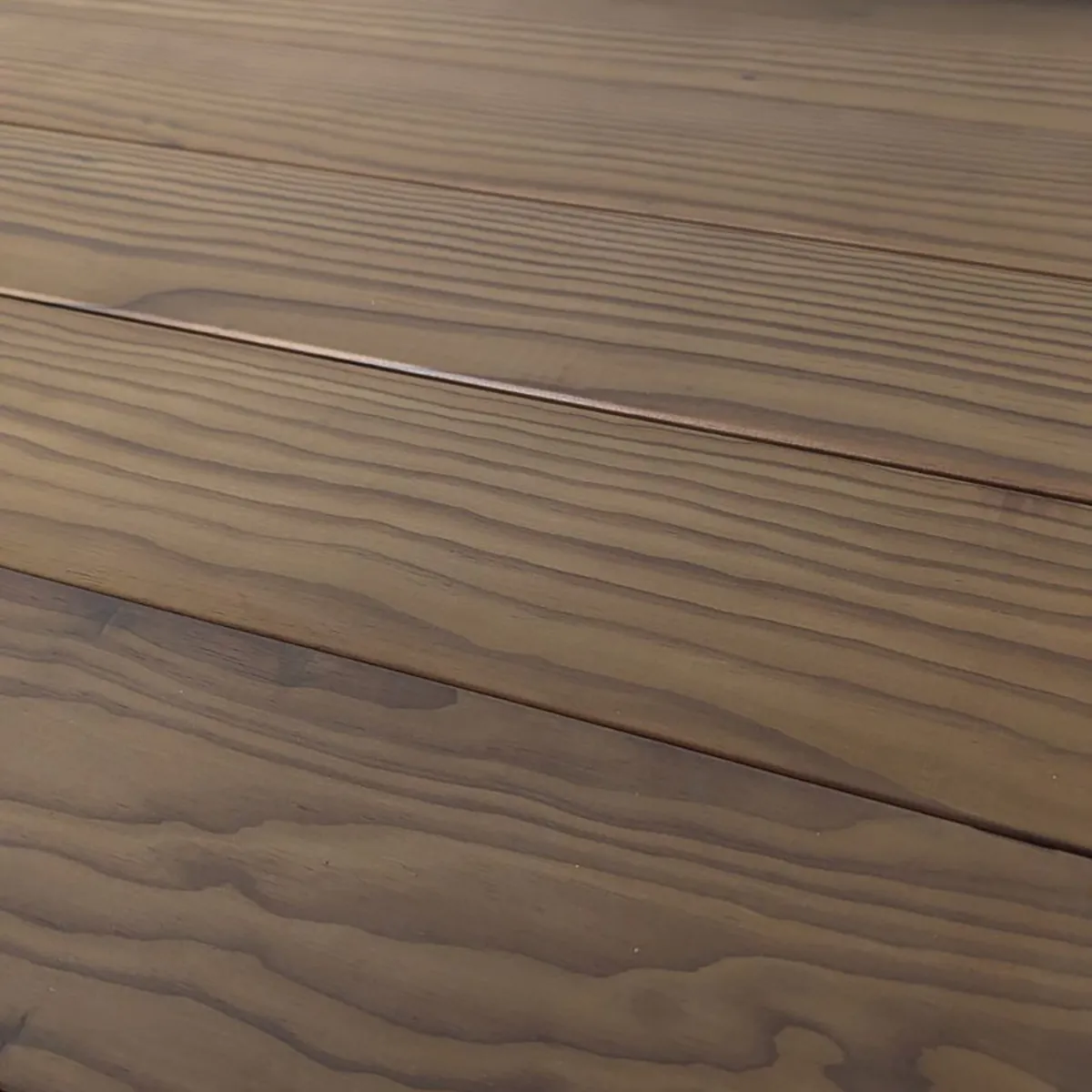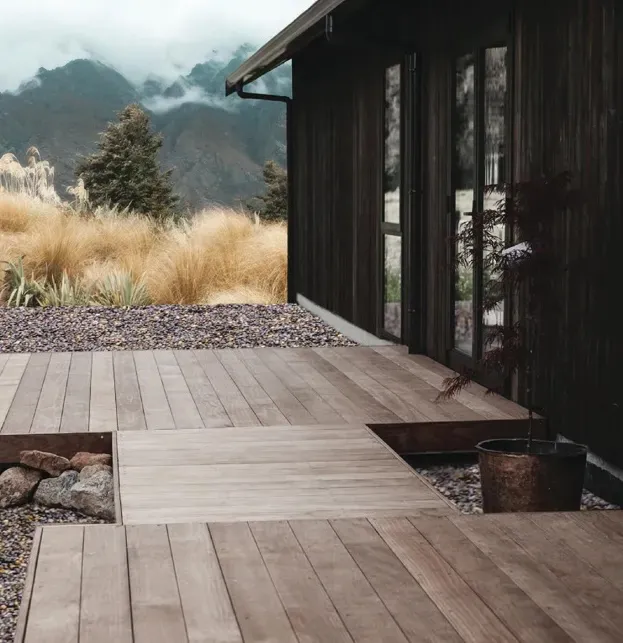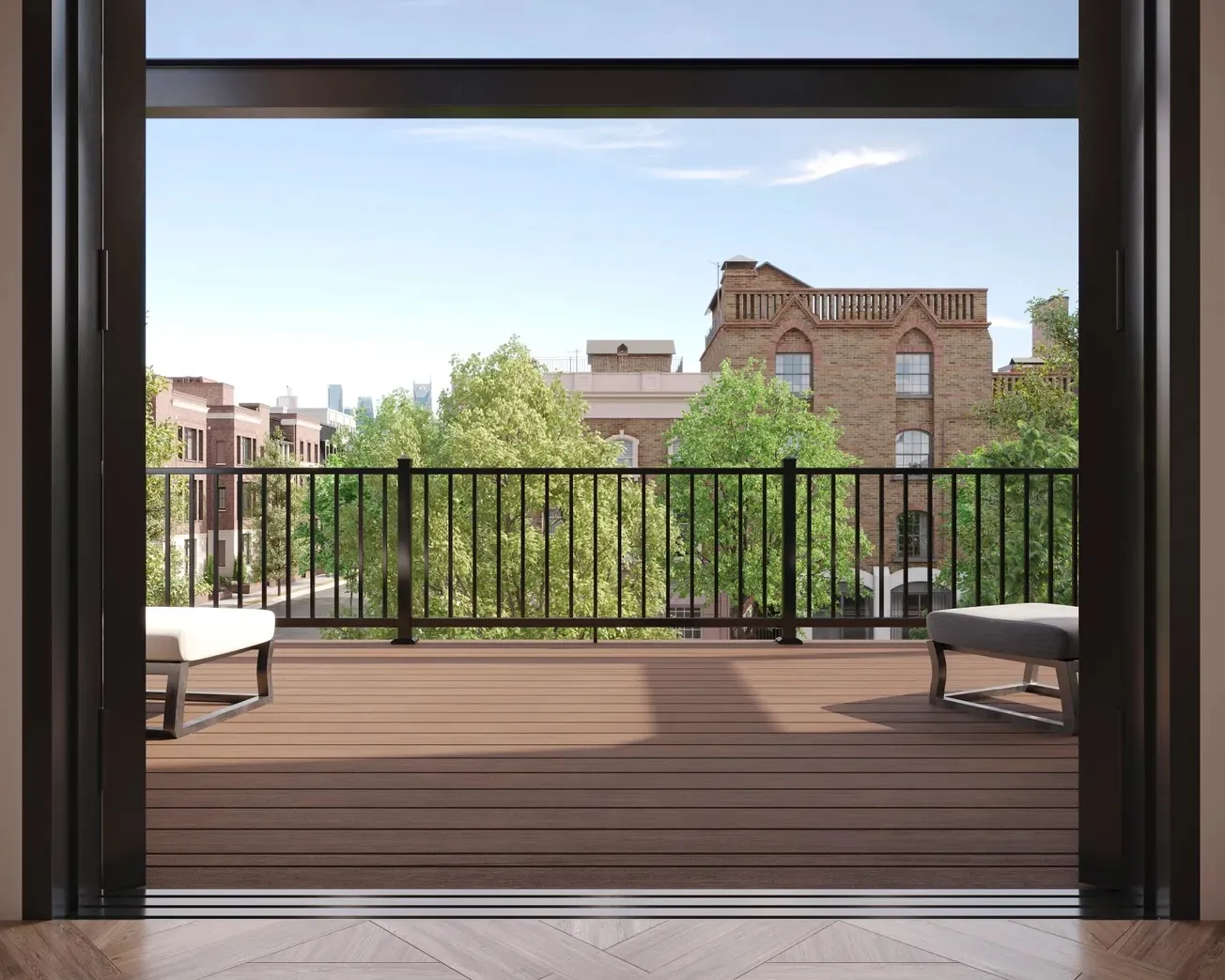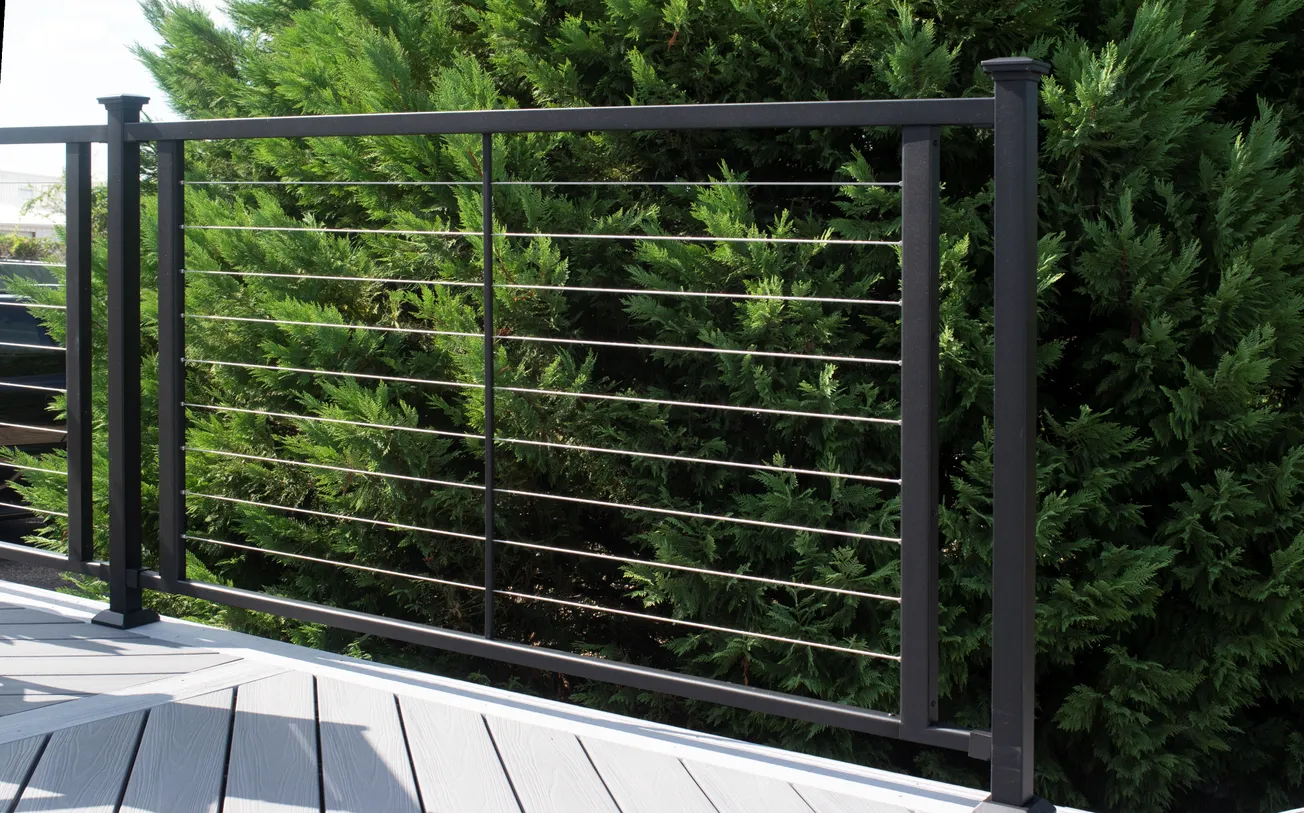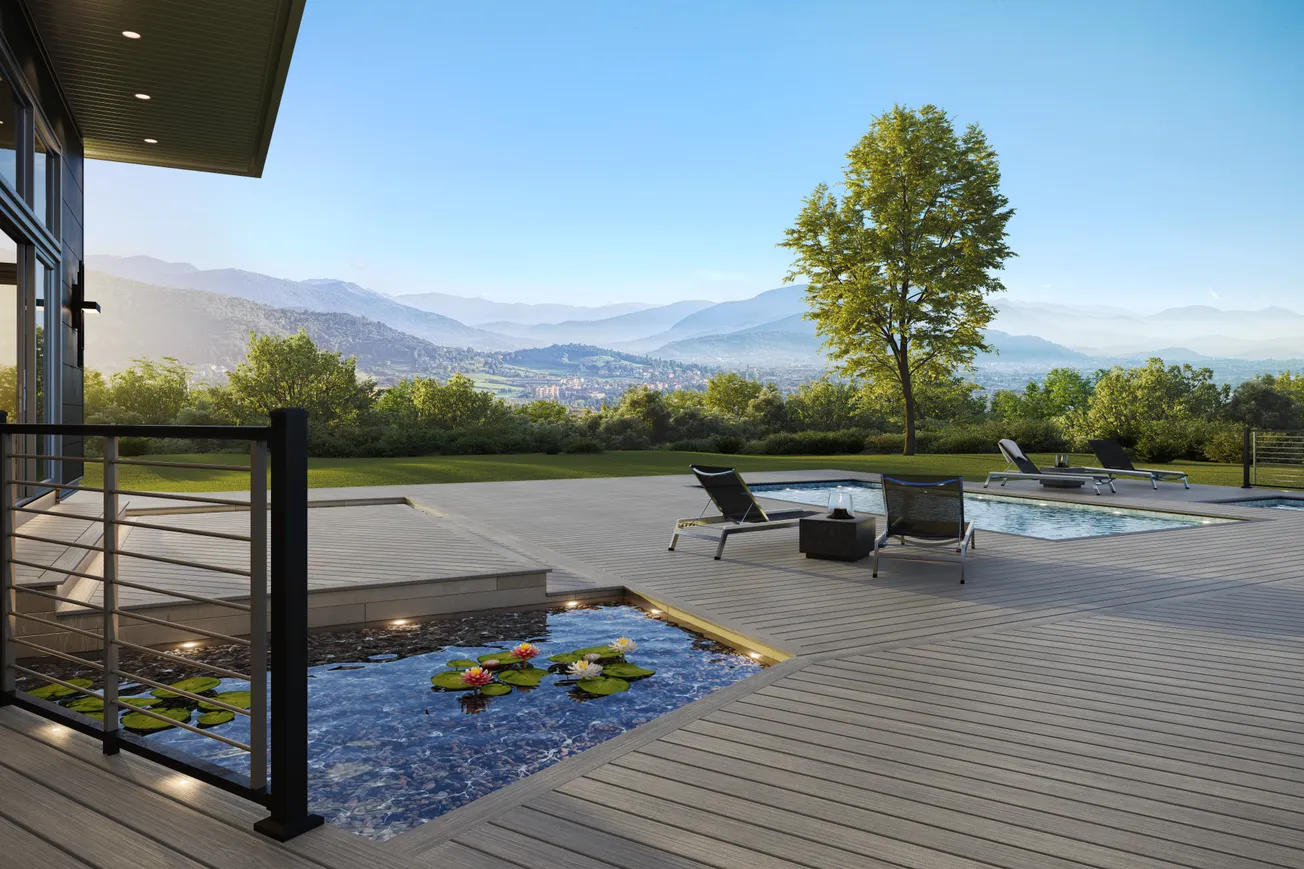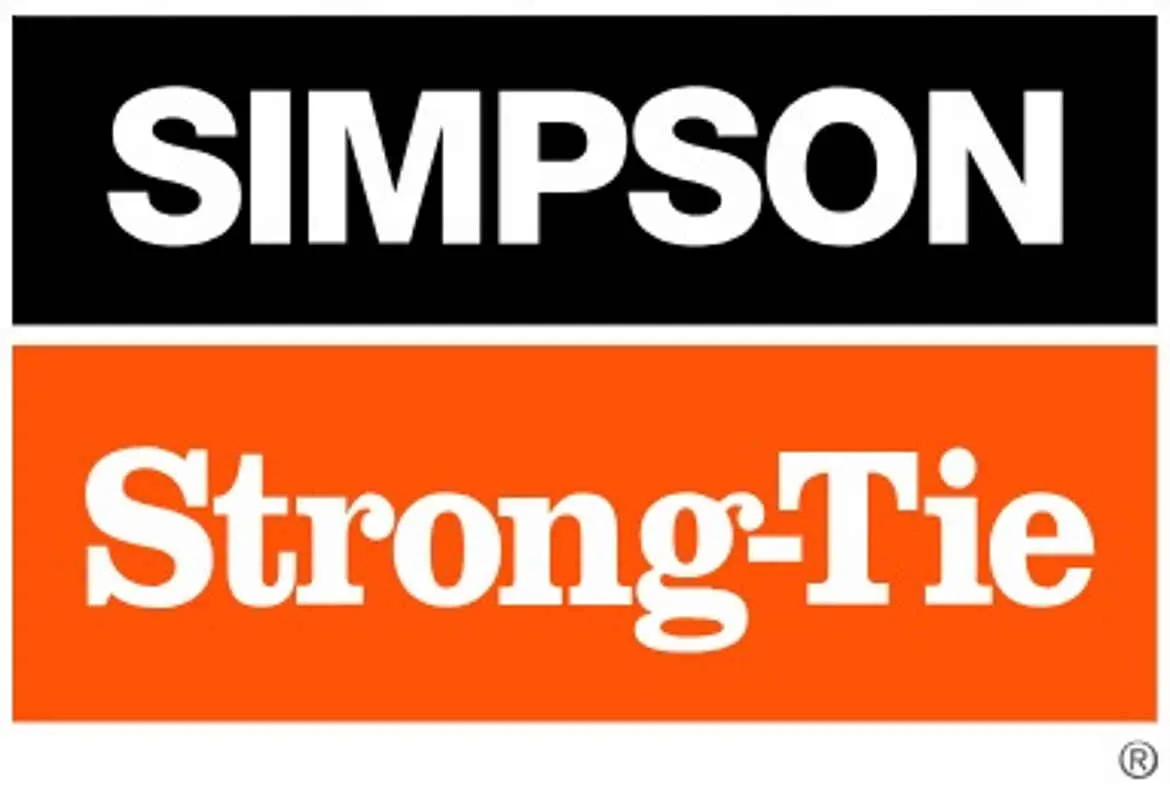Table of Contents
As we head into the busy spring renovation season, homeowners are seeking more ways to expand their outdoor living spaces for the summer or for future resale. Decks and patios are sought-after amenities for most homes, making them top projects to consider. In fact, a recent report ranked a new patio and a new deck within the top five projects that appeal to buyers.
As these projects become more popular, deck designs are becoming more elaborate and modern. Industry experts note that homeowners are requesting decks that blend in more with the house, instead of appearing as an addition that doesn’t match the exterior of the home. In addition, composite materials are on the rise due to their maintenance and environmental benefits, making it a $1 billion industry.
Mixing materials, specifically adding hardscapes, allows contractors to incorporate design elements that complement a new deck and the exterior of the home, creating a cohesive look for the homeowner. From a patio addition to a raised planter or a decorative support structure, pavers and hardscapes add a sophisticated element to a decking project. At the foundational level, hardscapes can fall into four key categories: pavers, permeable pavers, porcelain pavers, and wall products.
Pavers
All concrete pavers contain a mixture of sand, gravel, Portland cement, and water, and are quite durable. Today, pavers are offered in a wide variety of designs, textures, patterns and colors. From traditional to contemporary, there are an extensive number of options available. This ensures that creating a cohesive look is not just a possibility, it is a reality.
Permeable Pavers
One of the latest innovations in the paver industry is the development of permeable pavers. Permeable pavers, also known as permeable interlocking concrete pavers (PICP), are installed with layers of varying-sized stone or aggregate underneath that filter and direct stormwater to underground aquifers. With permeable concrete pavers, any rain that falls on the surface seeps back into the ground, reducing the burden on storm drains. In addition, a permeable paver system can be designed to harvest or recycle rainwater.
Porcelain Pavers
Porcelain pavers are a go-to option for homeowners seeking a contemporary outdoor living space. Outdoor porcelain pavers are similar to indoor porcelain tiles, only thicker and more durable. They are frost-resistant, skid-resistant, stain-resistant, and easy to clean. Combined with incredibly high breakage loads (up to 2,000 lbs.), porcelain pavers are the perfect solution for high-traffic outdoor areas. Some manufacturers offer porcelain pavers that can be dry laid onto grass, gravel, dirt or sand without grout, adhesives or specialized workers, making porcelain pavers easy to install. In addition, they are ideal for homeowners looking to create a cohesive design look as they can be coordinated to create a seamless indoor-to-outdoor flow.
Wall Products
At the basic level, hardscape wall products can be sub-divided into freestanding walls and retaining walls. However, wall products have experienced significant innovation in recent years. Freestanding walls products are now available in modular kits, allowing contractors to save time and labor on installation. Freestanding and retaining walls can also double as seating areas, raised planters, water features, column wraps, steps and more.
With an understanding of the various hardscapes products available, contractors are able to share additional design options with homeowners, which not only creates a happy customer but also can increases a contractor’s bottom line. Being educated on the latest design trends will position a contractor as an expert in the space, creating confidence with the homeowner.
Here are the latest design trends in outdoor living.
Color Trends
As noted, homeowners today are looking for designs that create a cohesive look throughout the exterior and can even bring the indoors out. As such, it’s important to keep the architectural style of the home in mind to ensure the product selections will mesh with the home’s current design. Grey and Greige remain popular as a color selection. The simple and neutral colors blend with clean design lines to create approachable, modern outdoor spaces. In addition, some pavers are taking inspiration from Pantone’s Color of the Year, Living Coral, and are incorporating coral hues into the blend. There are many paver options that complement the popular coral palette.
Patterns and Styles
Contractors and customers should consider the overarching style of the paver, which can fall into aesthetic categories such as traditional, contemporary and stone-textured. For those who prefer a more traditional look and feel, rectangular and cobble-style pavers are preferred and can be combined with a running bond, herringbone or basket weave pattern.
Modular shaped pavers offer a variety of rectangular and square sizes that can be laid in multiple laying patterns for a less repetitive, visually dynamic, and contemporary look. This contemporary look works well for larger patios that may be adjacent to a deck.
For those who may prefer a natural stone-textured look, asymmetrical or random shaped pavers are a great suggestion. These create a more natural look and can also be laid in a multi-piece pattern that emulates a more random look compared to a traditional laying pattern.
Creative Borders and Accents
Another current trend includes coordinating colors that tie in with the roof of the home, either in the main outdoor space or within a border. Borders can make pavers or other materials pop in a creative way, either by using the same paver in a different color or pattern or by laying a contrasting material for the border. Focal points can also create accents by using multiple paver styles or incorporating contrasting colors and patterns.
By becoming educated and skilled in hardscapes, contractors can build their services and portfolio and in turn, their business. Decks and hardscapes go hand-in-hand and can work together to create a beautiful and functional outdoor living space.


